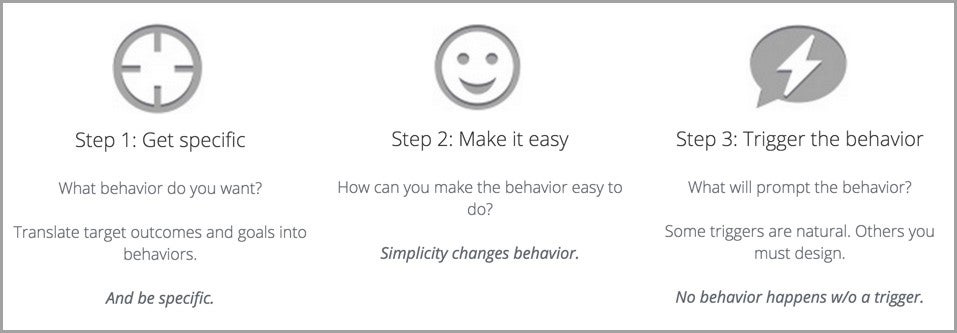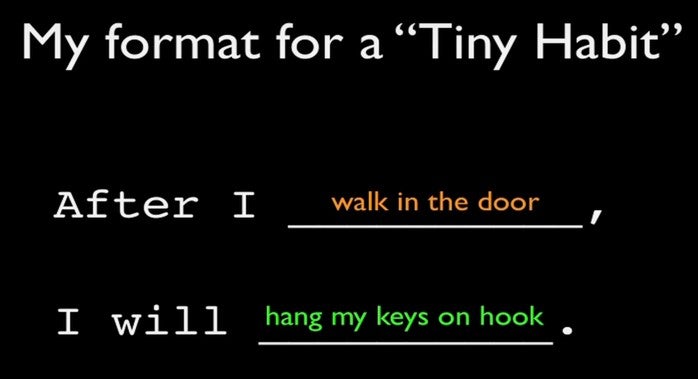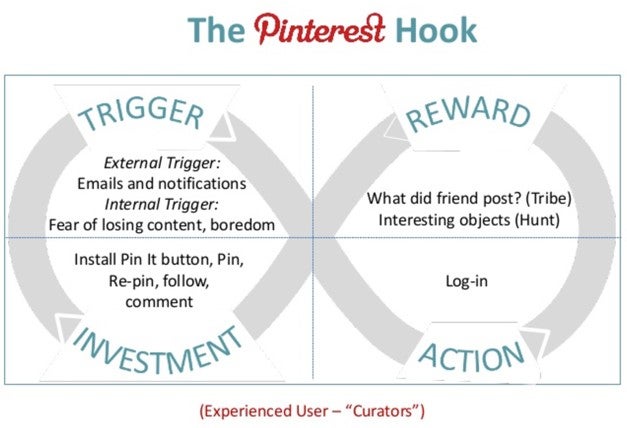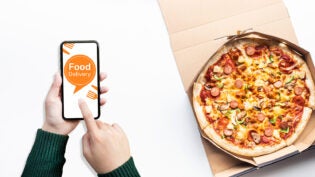7 Ways Facebook Keeps You Addicted (and How to Apply the Lessons to Your Own Products)
By: Jeff Bullas

In 1972 the first app went live.
It wasn’t designed for mobile and it was meant only for geeks and programmers.
That invention was designed and built by Ray Tomlinson. Today that messaging app is used by 4.3 billion people and 269 billion messages are sent every 24 hours.
You may have already guessed what that app is.
Email was the first addictive digital technology that had us checking in to our computers and then decades later our mobile phones.
One of the key reasons for why it is so addictive is “operant conditioning”. It is based upon the scientific principle of variable rewards, discovered by B. F. Skinner (an early exponent of the school of behaviorism) in the 1930’s when performing experiments with rats.
The secret?
Not rewarding all actions but only randomly.
Most of our emails are boring business emails and occasionally we find an enticing email that keeps us coming back for more. That’s variable reward.
That’s one way Facebook creates addiction.
Addiction is now designed “in”
Social media is no different but it has gone to another level.
In fact addiction and keeping you hooked is now designed “into” many platforms and apps. Because the apps that win are not the best products but the most addictive.
In a recent interview on Brain Hacking, Tristan Harris (an ex-Googler) describes how Facebook, Google and others are designing apps for addiction. They want you back to their product at least once a day.
But the reality is that users are spending an average of 50 minutes a day just on Facebook. This is up from 40 minutes a day just a year ago.
A tiny habit
Habits are powerful.
They are also behind behavior change and one of the top in this field is the behavior scientist B.J. Fogg who has been lecturing on this since 1997. He shares his time between Stanford University and industry work.
Fogg told Ian Leslie in a recent interview in 1843 magazine that he read the classics in the course of a master’s degree in the humanities. He says that when he read Aristotle’s “Rhetoric”, a treatise on the art of persuasion, “It just struck me….this stuff is going to be rolled out in tech one day!”
The reality now is that we are seeing soft and pervasive persuasion used on the social web.
His simple model provides an insight into how to create powerful apps and design.
Image source: Foggmethod.com
His recommendation?
Design for the behavior and not the outcome. That specific behavior could be a tiny habit. The outcome of becoming healthy is made up of many tiny simple habits. This could include, eating a healthy breakfast, walking every day and getting a good nights sleep.
A creating a tiny habit could be as simple as:
Trigger: After I walk in the front door
Behavior: I will hang my keys on the hook
His suggestion is then to celebrate that small habit success. That could be as simple as saying “I am awesome” or a happy dance.
The goal is to use daily routines to create tiny habits. Here is his format for creating a tiny habit.
Source: BJ Fogg Slideshare
Using an app is simple. Checking into Facebook to see how many likes you have on your latest post.
One of his students at Stanford University was Mike Kreiger, who went on to co-found Instagram, where over 700 million users now share sunrises, sunsets and selfies. The concept was simple, upload a photo and add a filter.
For many using Instagram is now a habit.
Better than cocaine
Some recent research by Sang Pil Han at Arizona State University discovered that mobile social apps foster more dependency than cocaine or alcohol. This was discovered when they looked at the data behind the use of Facebook and the popular Korean game, Anipang
The slot machine is a perfect example of creating a machine that is designed to hook and addict the user. Natasha Dow Schull, an anthropologist and the author of the book “Addiction by Design” has spent 15 years of field research in Las Vegas studying solitary gambling at electronic machines.
Her findings reveal how the mechanical rhythm of electronic gambling pulls players into a trancelike state they call the “machine zone,” in which daily worries, social demands, and even bodily awareness fade away.
Losing time
Even Skinner likened his Skinner box for the rats with its variable reward to the one armed bandits called slot machines. Beyond the reward the other elements to the art of seducing the gambler to slowly empty his pockets over hours and days includes the music, the mini games and even the actual appearance of spinning wheels.
Money is one thing but time is another and it is something you can never buy. So losing time is a worse addiction than losing money.
You can earn more money but you can never get back time.
This is how Facebook creates addiction
Building and developing a product that entices you to use it many times a day is at the heart of the Facebook marketing philosophy. It is core to their product development.
So here are some insights into human behavior that keep us switching on and logging in.
1. Validation
As human creators and sharers we all feel the need to have our creations validated.
Not many of us are immune to the numeric quantification of attention that appears at the bottom of every post on Facebook.
Just a few “likes” and we feel like no-one cares. But get 100 and you feel like an awesome creative champion.
Recent developments on the platform are seeing the streaming love hearts and likes that were initially built into Periscope are now appearing on Facebook. This burst of visual likes is programmed in to keep you hooked. It is “not” an accident.
Facebook has the resources to copy almost any feature of competitors that they feel improves their addiction tactics.
2. Variable reward
The discovery by Skinner that showed that rats were more likely to become addicted when there were random rewards.
Diving into your Facebook feed reveals various pieces of content and revelations that keep us hooked. Some boring others enticing.
The ever changing feedback that is the numeric quantification of content success is like a drug.
3. Fear of missing out
We all want to be part of the show and fear of missing out is real. This is sometimes abbreviated as “FOMO.” Curiosity is a human condition that keeps us looking, listening and clicking on the little app icon.
There is a bit of a voyeur in all of us and the platforms feed and reward that human behavior.
4. Sounds
Getting that sound from your phone notifications is one thing that makes most of us “check in.”
But the Facebook messenger sound that happens when you are exchanging private messages builds even more anticipation. It is intoxicating and addictive.
That design is not by accident.
This is now even appearing as a visual on your SMS and text messages. Now those little moving dots reveal that someone is typing at the other end and that one little tactic keeps us glued to our screens.
5. Vibration
Phones also provide us with alerts when on silent mode. It is that vibration in your pocket or purse.
In most cases when downloading an apt is hard “not” to activate it or it is almost hardwired in.
It is opt-out not opt-in as the default.
That tempting vibration when someone likes, comments or leaves a message on your social media networks is an ever-present temptation.
6. Connection
At a recent social media marketing conference I bumped into a new attendee that revealed that she had now found her “tribe”. Being connected to a worldwide community is part of the attraction of social media. It allows us to connect online first and then meet in person later.
Wanting to be connected is a very powerful motivation to use the social web.
The ability to find other passionate humans around the world and to join your global “passion tribe” is compelling ….and addictive.
7. Investment
One of the reasons I use Facebook is to record my trips. It is where I post my mobile photos that distils the highlights of the day in words and images. The time line then becomes a travelogue that is in essence my adventure diary.
It is an investment.
The more I create and the longer I spend in posting and publishing the bigger the emotional investment. Facebook becomes your life mapping app.
Taking control back
A digital detox is one tactic that seems to be gaining traction and attention but for me there is a simpler solution.
Turn off all alerts and notifications.
Gaining back control of your attention is necessary to get work done. Deep work and creating content of consequence is not achieved when there is constant distraction.
I am writing this with sounds, vibrations and all social media turned off. Even the email is off duty.
How to apply the lessons to your products
In his book “Hooked: How to Build Habit Forming Products,“ Nir Eval reveals the model for building products that people love. And products that win are the ones that get us hooked.
Here is an example of how Pinterest keeps you “hooked”
Source: BJ Fogg Slideshare
Here is the distillation of his model in 4 steps to keep your prospects and customers engaged.
- Create internal and external triggers that bring people to your product
- Get them to log-in or sign up to your resources or product
- Provide a variable reward that connects to the tribe, provides resources and enables personal mastery
- Allow them to build an investment that provides more triggers to keep them coming back.
Over at his website he has a worksheet that is worth checking out.
Over to you
Creating simple and tiny habits over time leads to big outcomes.
Using this principle alone to design and build digital products that bring value to people’s lives and keeps them coming back sits behind some of the fastest growing companies that the world has ever seen.
How could you apply these principles to your products?















